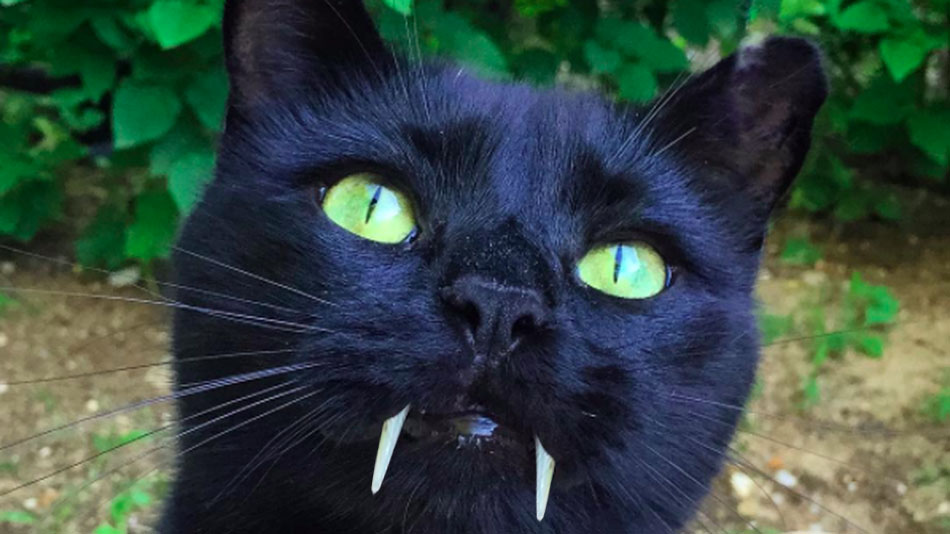Tuskat
A small cat species with bigger canines than a regular cat, as a result of the few but deadly atom bombs, dropped during the war.
This mutation in the wildcats are native to Tsaver'Lazu, but has slowly started to spread. This association to the war and mutation has caused a widespread belief among other countries that Tuskats bring bad luck.
The tuskat (Felis Silvestris Dente) is a new species that developed from mutations in the European Wildcat. While it does has some physical characteristics in common with it's ancestor, it's big "fangs" and a slightly bigger body, makes a clear physical difference.
Basic Information
Anatomy
The most recognizable trait of the Tuskat is probably the long fangs. These long teeth are the canines that grow faster and longer than the other teeth. What exactly causes this grown is still unknown, but popular theory is that a mutation has caused the distribution of calcium to be biased towards the canines.
Being a little bigger than the European Wildcat, the tuskat males can weight up to 10 kg (22 lbs) and the females up to 5 kg (11 lbs). The males can be up to 80 cm (31.5 in) long with 45 cm (17.7 in) of that being their tail. The females are much smaller and only reach up to 55 cm (21.6 in) in length with 30 cm (11.8 in) being tail.
The tuskat is more rugged than the classical domestic cat, and has at bigger paw-to-body ratio than both the domestic cat and the European Wildcat.
Biological Cycle
The Tuskat is very affected by the change of seasons, both wild and domestic are affected but the domestic is not dependent on the changes like the wild ones are.
Not only growing a thick wintercoat in the cold months, the color of the fur changes too. The fur changes from a light brown or grey to very dark shades. This helps the wild Tuskats camouflage better in the leafless environment of Tsaver'Lazu in the winter.
Though the Tuskat does not hibernate in the winter, it's needed for food changes and it can do fine with only a meal every other day.
Scientific Name
Felis Silvestris Dente
Origin/Ancestry
European
Conservation Status
Most of the Tuskats live wildly or as pets. They are in no way threatened, bitter citizens might even call them pests.
Remove these ads. Join the Worldbuilders Guild









Comments